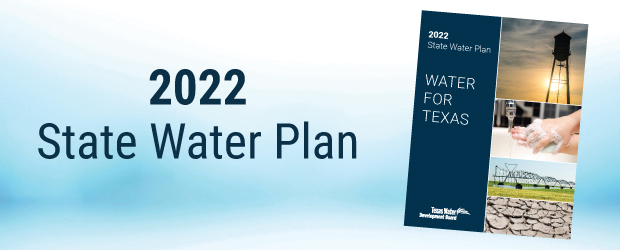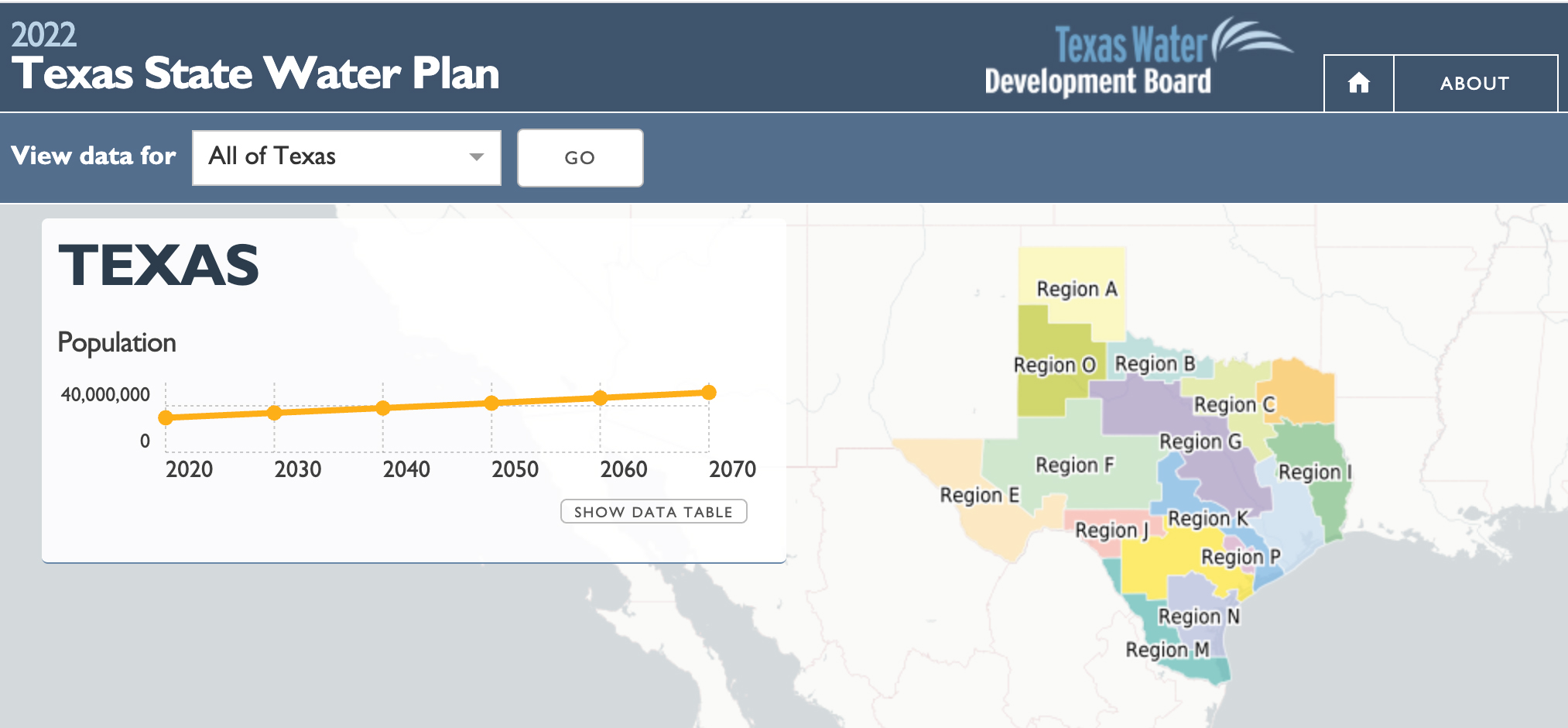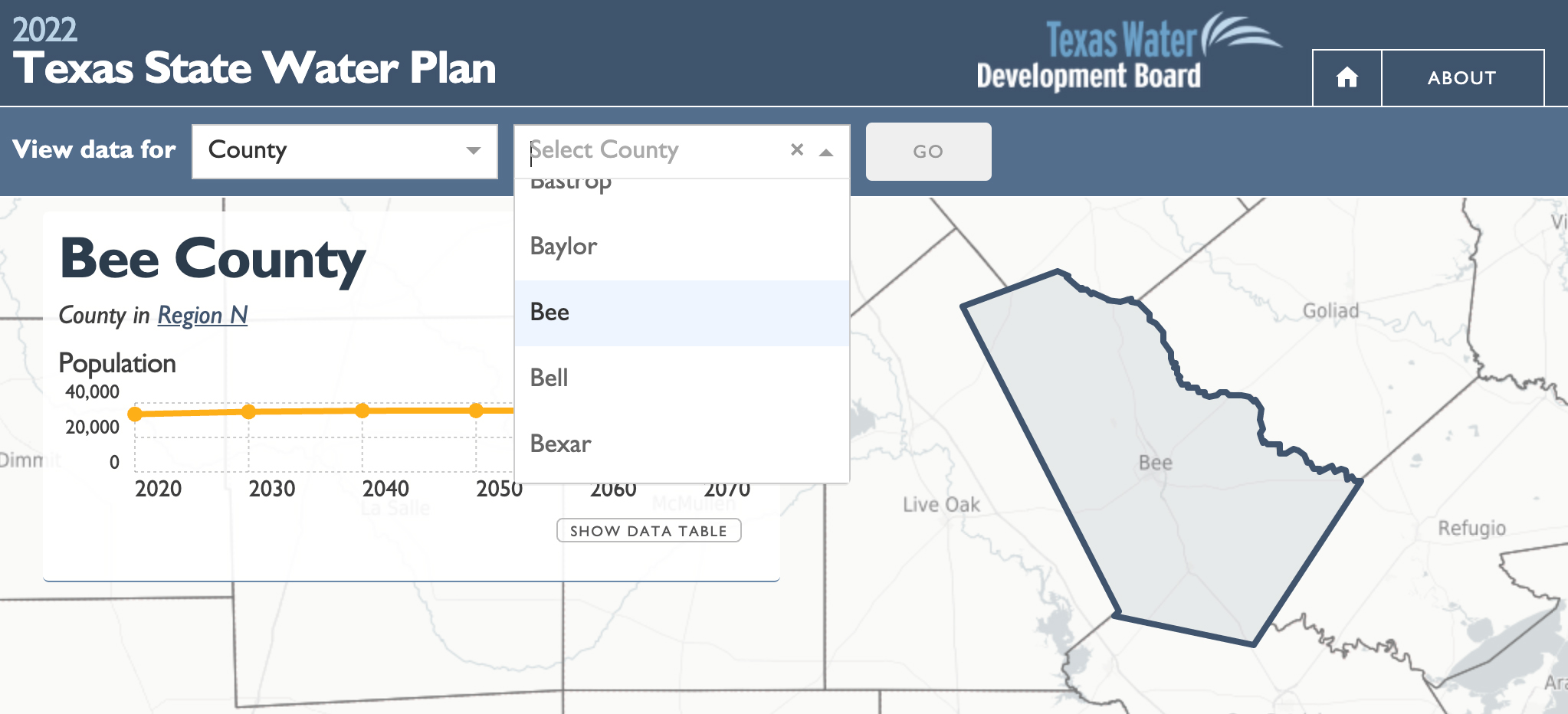The evolution of statewide water strategies Posted on August 11, 2021

Although the 2022 State Water Plan and the 1961 State Water Plan are both planning frameworks to guide the state’s water strategies. The latest State Water Plan looks very different from the first Texas State Water Plan in its presentation of information. The 2022 State Water Plan reflects an innovative and nationally recognized process based on the work of regional water planning groups, local water plans, and the input of Texans. The Texas Water Development Board (TWDB) also makes the latest guide to state water policy accessible in ways that were unavailable a quarter of a century ago.
How is the State Water Plan produced?
The State Water Plan is produced every five years by the TWDB and integrates public input, science, and local water plans to secure a plan to meet our anticipated state’s water supply needs. It’s a process that results in various approaches to drought preparedness and solutions to ensure that future water needs are met across the state.
Perhaps most importantly, the Texas State Water Plan reflects a bottom-up process informed by stakeholder and public input. The 2022 State Water Plan is the 11th state water plan and the fifth plan based on the regional water planning process. Regional water planning groups develop plans that serve the entire region, taking into consideration all the water needs of area communities.
According to Temple McKinnon, the TWDB director of Water Supply and Planning, the State Water Plan is built upon the latest data from the entities that manage water sources and implement water-related projects. In addition, regional water planning group meetings are open to the public, and comments were welcome during the public comment period. McKinnon said, “With the development of each plan occurring in public forums, the transparency and opportunity for public input allows for enhanced dialogue at each step of the process.”
The State Water Plan aggregates water supply needs and plans to address those needs at multiple geographic levels so that decision-makers have the information they need to assist their communities. The 16 regional water plans developed by regional water planning groups set forth specific, actionable strategies and projects to meet area water needs.
The regional water plans serve as the cornerstone of the State Water Plan and address the needs of all water user groups in the state. At the end of each five-year regional water planning cycle, TWDB staff compiles information from the approved regional water plans and other sources to develop the State Water Plan, which is presented to TWDB’s Board for adoption. The final adopted plan is then submitted to the Governor, Lieutenant Governor, Speaker of the House, and the Texas Legislature.
What is the interactive State Water Plan?
The State Water Plan has evolved from a narrative document to a framework supported by standard data and supporting technology that makes the information more accessible. In addition to sharing the entire plan online, along with a list of recommended water management strategies and many more related documents, the TWDB also makes information from the State Water Plan available online via the interactive State Water Plan (iSWP). In addition, McKinnon said, “the iSWP visualizes this information to make it much more consumable and accessible to decision-makers and the communities they serve.”

Visitors to the 2022 Interactive State Water Plan can engage with statewide water planning data and view information specific to their region, county, and utility or “water user group.” For example, by selecting “all of Texas” from the “view data for” drop-down menu, users can see statewide water planning information related to:
- projected water demands
- existing water supplies
- the relative severity and projected water needs (potential shortages)
- the water management strategies recommended to address potential shortages
- recommended capital projects and their sponsors
Similar information can be viewed at the regional, county, and individual utility or water user group levels. For example, residents of Bee County can explore specifics about county water use, water needs, and view details about water-related projects.

Graphs, figures, tables, and maps make the data easier to navigate. In addition, many of the page elements are interactive, so you can hover over and click elements to show more detail, use embedded search and sort functions to locate information, or click hyperlinks to navigate to other pages in the application.
McKinnon hopes that enhanced accessibility to State Water Plan information “increases public awareness and engagement in the water-planning process and facilitates dialogue around identified water supply issues.”
The data collected directly from the regional water planning groups inform the Interactive State Water Plan website. For more information about the Interactive State Water Plan, visit https://texasstatewaterplan.org/about.
This article is posted in Water Planning .